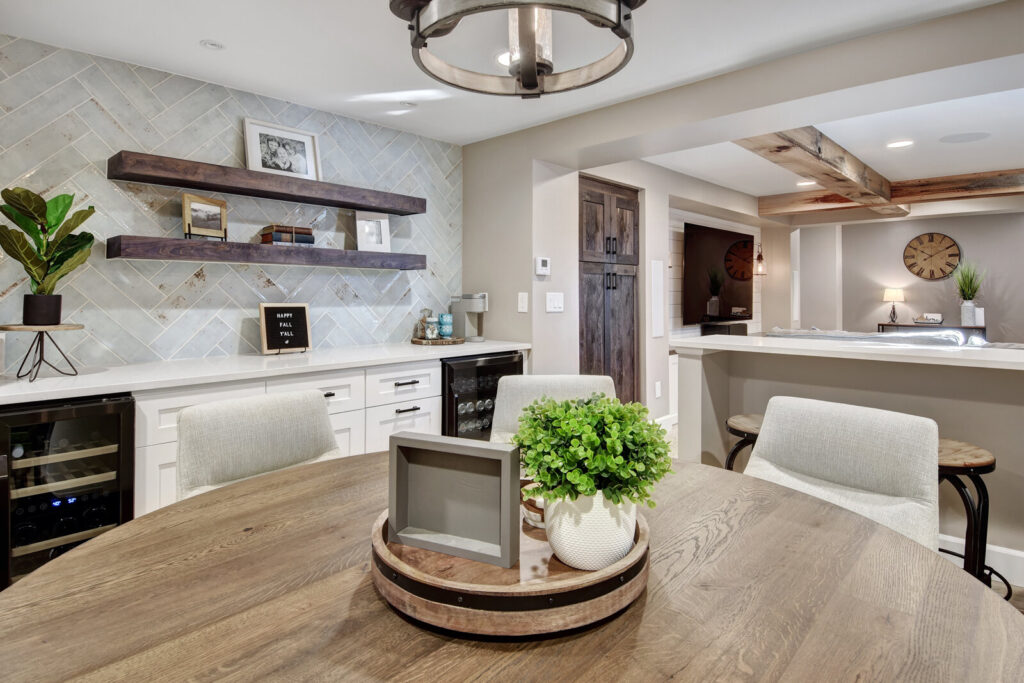Basements often suffer from the out-of-sight-out-of-mind syndrome. They become the default dumping ground for items we deem less important, out of use, or for ‘future use’—a future that never seems to arrive. For many, the thought of basement organization appears daunting, almost impossible. The space is often too large, too cluttered, and too neglected. However, an organized basement is not just a possibility; it’s a game changer for your home and lifestyle.
At Organized by L, we specialize in creating order out of chaos. We’ve successfully tackled numerous basements, transforming them from dark, cluttered spaces into functional and organized areas. In this comprehensive guide, we will walk you through the steps to reclaim your basement. If you think you might need some professional help, don’t hesitate to contact us.
Assessing the Situation: What’s Really Down There?
Start by taking stock of what your basement currently holds. This is where you face the demons (or, more likely, those boxes of Christmas decorations from five years ago that you’ve forgotten about). You may find items like:
- Old furniture
- Boxes of clothes and costumes
- Tools and equipment
- Unused appliances
- Seasonal decorations
- Baby stuff, outgrown yet saved “for memories”
Create a list or inventory of the categories of items you have stored. This exercise will give you a visual understanding of the task ahead and will serve as a roadmap for the organization process.
Planning: Blueprint for Success
Planning is essential when tackling a large project like a basement. Consider your available space, what you need to store, and how often you need to access those items. The idea is to create zones in your basement, much like rooms in your home, each serving a specific purpose. Here are some potential zones:
- Workshop or Crafting Area
- Storage Zone
- Entertainment or Play Zone
- Fitness Area
Drawing a simple layout can make a significant difference in visualizing the end result. Make sure to measure the space to understand what storage solutions will fit. During planning, you might also come across several questions. Feel free to visit our FAQs page for some quick answers to common organizing queries.
Sorting and Decluttering: The Heart of the Matter
Let’s get into the most challenging part. Start with one corner or section at a time, and sort your items into different categories based on your inventory list. As you sort, keep these piles:
- Keep: Items that are currently in use or will be used in the foreseeable future.
- Donate or Sell: Items in good condition but are no longer needed.
- Recycle: Items that can’t be used any longer but are recyclable.
- Trash: Items that are beyond use or repair.
Be ruthless in your decluttering. If you haven’t used something in over a year and don’t foresee using it in the near future, it’s time to say goodbye. The goal is to make space for the items that are truly necessary and useful.
The Right Storage Solutions
Once you’ve decluttered, it’s time to pick the appropriate storage solutions. Think about shelving units, storage bins, drawers, and pegboards. Also, consider these features:
- Transparency: Clear bins allow you to see what’s inside, saving time when you’re looking for something specific.
- Mobility: Items you use frequently should be easily accessible, perhaps in rolling bins.
- Labels: Every bin, box, or shelf should be clearly labeled.
Consider the climate in your basement. If it tends to get damp, go for plastic bins rather than cardboard boxes to avoid mold and mildew. If you’re storing documents or photos, make sure they are in a climate-controlled space or in sealed plastic containers.
Setting Up Your Zones
With your storage solutions at hand, start placing your items back into your zoned areas. Each zone should be intuitive to navigate. Here are some ideas for setting up different zones:
Workshop or Crafting Area: Install a workbench and a pegboard to hold your tools. Use clear storage drawers for screws, nails, and other small items.
Storage Zone: Place shelving units along the walls. Use labeled bins for different categories like holiday decorations, old clothes, etc.
Entertainment or Play Zone: This area should be easy to clean and manage. Use baskets or rolling carts to store toys, board games, or other recreational items.
Fitness Area: If you plan on using your basement for workouts, keep your exercise gear neatly arranged. A simple rack can hold weights, while hooks on the wall can manage resistance bands or jump ropes.
Maintaining the Order
An organized basement doesn’t stay that way on its own. Create a maintenance plan. This could involve a quarterly review of what’s being stored, ensuring that new items have a designated spot, and a commitment to keep things in their proper place.
By organizing your basement, you unlock a world of possibilities: more room, a more functional home, and, most importantly, peace of mind. An organized basement isn’t just extra storage space; it’s a well-oiled extension of your living space, a part of your home that works for you rather than against you.
We understand that this can be a huge task to undertake. If you’re feeling overwhelmed, remember that help is available. Organized by L specializes in basement organization and would be happy to assist you in transforming your basement. For any questions or to schedule a consultation, contact us today.
For more insights, concerns, or queries, check out our FAQs section where we address some common questions people have about organizing their spaces.
Thank you for investing your time in making your home a more organized, functional, and peaceful place to live. Happy Organizing!

